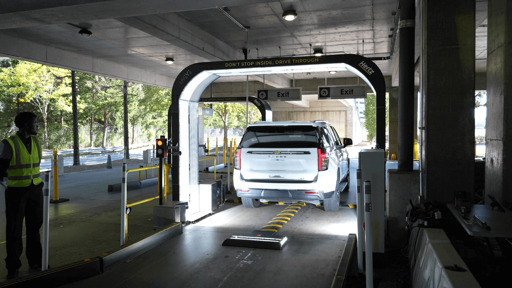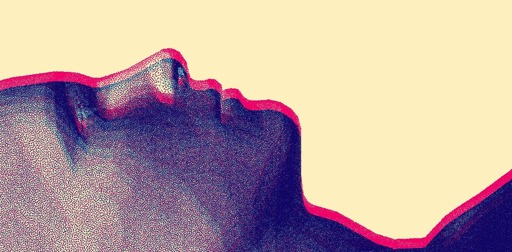MIT researchers have unveiled a portable, window‑sized device dubbed the atmospheric water harvesting window (AWHW) that can extract clean drinking water directly from air, even in death valley
-
This post did not contain any content.
-
This post did not contain any content.
These are called dehumidifiers and you should not drink the water that comes out of them.
The condensed water is pure, yes. But dehumidifiers almost instantly become a breeding ground for all kinds of nasty shit. Nasty shit that is now in your ‘pure’ water.
Edit: It's the same problem as the WaterSeer which is also a passive dehumidifier. This same idea comes up several times a year, yet you don't see them deployed in quantity anywhere. They simply don't work well. (The WaterSeer actually seems like a better design than what is in OP's article.)
-
These are called dehumidifiers and you should not drink the water that comes out of them.
The condensed water is pure, yes. But dehumidifiers almost instantly become a breeding ground for all kinds of nasty shit. Nasty shit that is now in your ‘pure’ water.
Edit: It's the same problem as the WaterSeer which is also a passive dehumidifier. This same idea comes up several times a year, yet you don't see them deployed in quantity anywhere. They simply don't work well. (The WaterSeer actually seems like a better design than what is in OP's article.)
There are plenty ways to purify water once it's been obtained
-
These are called dehumidifiers and you should not drink the water that comes out of them.
The condensed water is pure, yes. But dehumidifiers almost instantly become a breeding ground for all kinds of nasty shit. Nasty shit that is now in your ‘pure’ water.
Edit: It's the same problem as the WaterSeer which is also a passive dehumidifier. This same idea comes up several times a year, yet you don't see them deployed in quantity anywhere. They simply don't work well. (The WaterSeer actually seems like a better design than what is in OP's article.)
Read the article. No electricity required. Uses outside air. Not really a "dehumidifier" unless you want to play strange pedantics. Just like a water filter, you probably wouldn't suck on the filter element
-
This post did not contain any content.
Are the plans open source, freely available online? Or is this a situation where you need at modern manufacturing facility to produce one?
-
Are the plans open source, freely available online? Or is this a situation where you need at modern manufacturing facility to produce one?
Or is this a situation where you need at modern manufacturing facility to produce one?
Probably the second one:
The team also shaped the hydrogel into a dome-like origami array, like a sheet of bubble wrap. The unique structure increased surface area and maximized how much the material could swell so it would hold more water vapor. The team then sandwiched the gel between two glass panels roughly the size of a small window, both coated with a cooling chemical layer, and added tubing to collect the water.
Assuming I'm wrong, you'd still need a ton of those for a single person. They got approximately 5.5oz in one night from one panel in death valley, but a quick Google says you need about 32oz per hour in high heat. You'd need just under 6 panels/person/hour you need water, which takes away from the idea that this is portable or really usable for hiking when you'd need like 80+ of these things to get anywhere close to having enough water for one day.
-
There are plenty ways to purify water once it's been obtained
Absolutely. And that is the problem you actually need to solve in the places lacking potable water. They generally have some water, it just isn't potable. Filters need regular replacing, additives like chlorine need constant resupply, and reverse osmosis is extremely energy intensive. It's fundamentally a logistics problem.
-
Read the article. No electricity required. Uses outside air. Not really a "dehumidifier" unless you want to play strange pedantics. Just like a water filter, you probably wouldn't suck on the filter element
No electricity required.
Means this dehumidifier produces even less water than the standard powered dehumidifier.
Uses outside air.
Will breed even nastier shit in the water than one inside a building.
-
Absolutely. And that is the problem you actually need to solve in the places lacking potable water. They generally have some water, it just isn't potable. Filters need regular replacing, additives like chlorine need constant resupply, and reverse osmosis is extremely energy intensive. It's fundamentally a logistics problem.
If you're concerned with bacterial growth in the condensate of a dehumidifier, all you need to do is boil it
-
Or is this a situation where you need at modern manufacturing facility to produce one?
Probably the second one:
The team also shaped the hydrogel into a dome-like origami array, like a sheet of bubble wrap. The unique structure increased surface area and maximized how much the material could swell so it would hold more water vapor. The team then sandwiched the gel between two glass panels roughly the size of a small window, both coated with a cooling chemical layer, and added tubing to collect the water.
Assuming I'm wrong, you'd still need a ton of those for a single person. They got approximately 5.5oz in one night from one panel in death valley, but a quick Google says you need about 32oz per hour in high heat. You'd need just under 6 panels/person/hour you need water, which takes away from the idea that this is portable or really usable for hiking when you'd need like 80+ of these things to get anywhere close to having enough water for one day.
Might work better where it's more humid. Might bring humidity to more bearable levels if you have a lot of them?
-
Or is this a situation where you need at modern manufacturing facility to produce one?
Probably the second one:
The team also shaped the hydrogel into a dome-like origami array, like a sheet of bubble wrap. The unique structure increased surface area and maximized how much the material could swell so it would hold more water vapor. The team then sandwiched the gel between two glass panels roughly the size of a small window, both coated with a cooling chemical layer, and added tubing to collect the water.
Assuming I'm wrong, you'd still need a ton of those for a single person. They got approximately 5.5oz in one night from one panel in death valley, but a quick Google says you need about 32oz per hour in high heat. You'd need just under 6 panels/person/hour you need water, which takes away from the idea that this is portable or really usable for hiking when you'd need like 80+ of these things to get anywhere close to having enough water for one day.
Interesting. That design sounds a lot like vapor chambers that cell phones use for cooling. Just, not sealed.
-
This post did not contain any content.
Now all I need is a droid that speaks the binary language of moisture vaporators…
-
If you're concerned with bacterial growth in the condensate of a dehumidifier, all you need to do is boil it
There's such a thing as botulism ; so - once the toxin causing it has formed, it doesn't matter that you kill the bacteria that produced it with boiling the water. The toxin itself survives much harsher conditions.
I think it's not the only danger which you haven't considered here.
-
There's such a thing as botulism ; so - once the toxin causing it has formed, it doesn't matter that you kill the bacteria that produced it with boiling the water. The toxin itself survives much harsher conditions.
I think it's not the only danger which you haven't considered here.
Y'all, we're talking about condensate from a device specifically designed to capture water for drinking. We're not talking about drinking the water dripping from your AC. Ensuring this water is drinkable is remarkably simple.
Not only that, but Clostridium botulinum only grows in anaerobic environments, so it isn't even a remote concern in this case. That's why you don't hear about it much outside of canned food or instances where it's purposefully cultivated for medical applications.
-
This post did not contain any content.
Probably this is paper https://arxiv.org/pdf/2201.10385
-
No electricity required.
Means this dehumidifier produces even less water than the standard powered dehumidifier.
Uses outside air.
Will breed even nastier shit in the water than one inside a building.
You know absolutely nothing about what makes water drinkable or how we as a society have already solved this problem
-
Might work better where it's more humid. Might bring humidity to more bearable levels if you have a lot of them?
But when it's really humid, there's usually much better ways of getting water.
-
But when it's really humid, there's usually much better ways of getting water.
But you also want to get humidity out of air so it's still a perk
-
Y'all, we're talking about condensate from a device specifically designed to capture water for drinking. We're not talking about drinking the water dripping from your AC. Ensuring this water is drinkable is remarkably simple.
Not only that, but Clostridium botulinum only grows in anaerobic environments, so it isn't even a remote concern in this case. That's why you don't hear about it much outside of canned food or instances where it's purposefully cultivated for medical applications.
Well, if this idea is so glorious, why is none of the large array of water harvesting devices that pop up multiple times a year ever deployed at scale?
Easy answer: because they are all marketing bullshit that doesn't solve the actual problem and instead only exists to part investors from their cash.
-
Or is this a situation where you need at modern manufacturing facility to produce one?
Probably the second one:
The team also shaped the hydrogel into a dome-like origami array, like a sheet of bubble wrap. The unique structure increased surface area and maximized how much the material could swell so it would hold more water vapor. The team then sandwiched the gel between two glass panels roughly the size of a small window, both coated with a cooling chemical layer, and added tubing to collect the water.
Assuming I'm wrong, you'd still need a ton of those for a single person. They got approximately 5.5oz in one night from one panel in death valley, but a quick Google says you need about 32oz per hour in high heat. You'd need just under 6 panels/person/hour you need water, which takes away from the idea that this is portable or really usable for hiking when you'd need like 80+ of these things to get anywhere close to having enough water for one day.
5.5 wizards of oz?
-
-
$440 Charge For A Wheel Scuff Raises Questions About Hertz's AI Rental Car Damage Scanner
Technology 1
1
-
Colleges spend Millions to catch plagiarism and AI. Is Turnitin faulty and expensive tech that require students to let the company keep their papers forever, worth it?
Technology 1
1
-
-
-
-
Most of us will leave behind a large ‘digital legacy’ when we die. Here’s how to plan what happens to it
Technology 1
1
-



